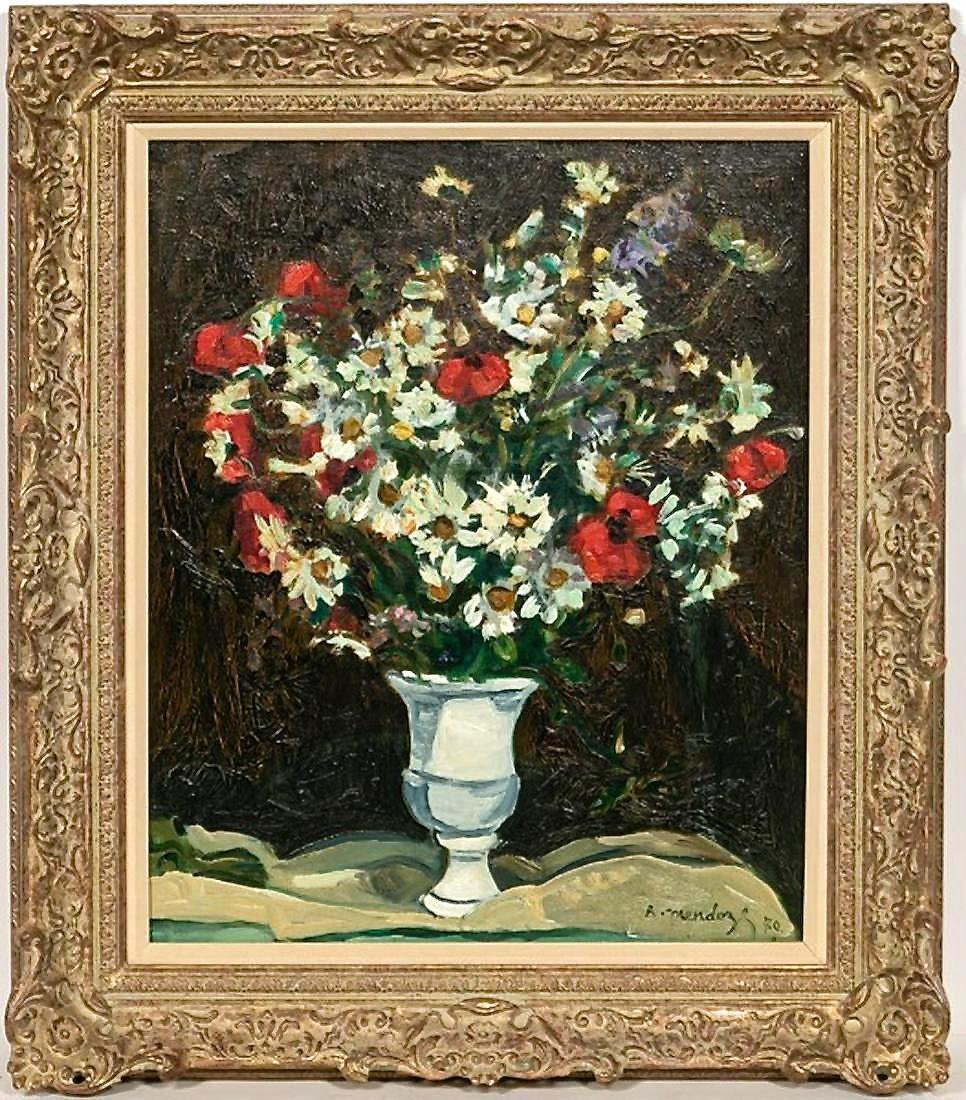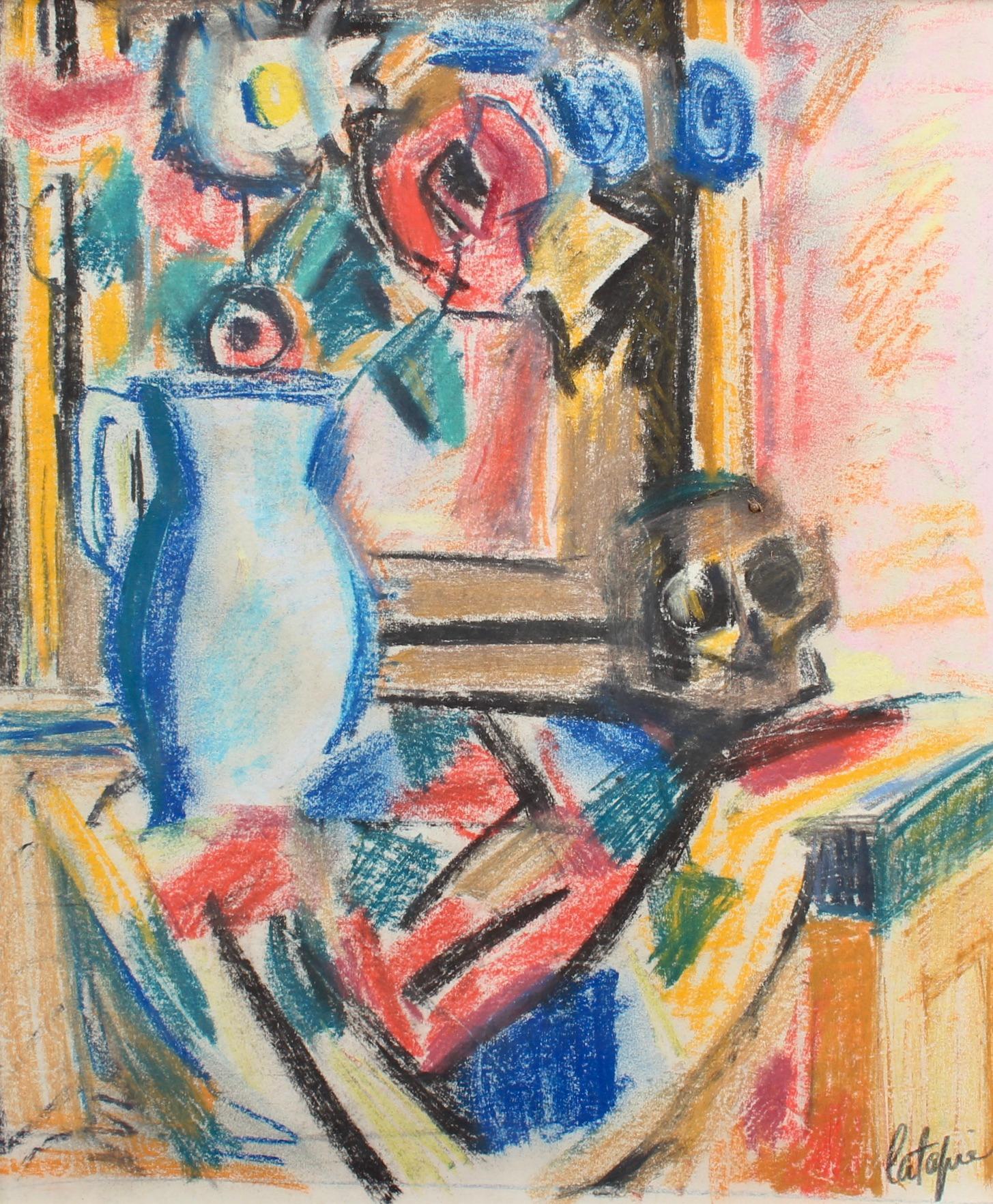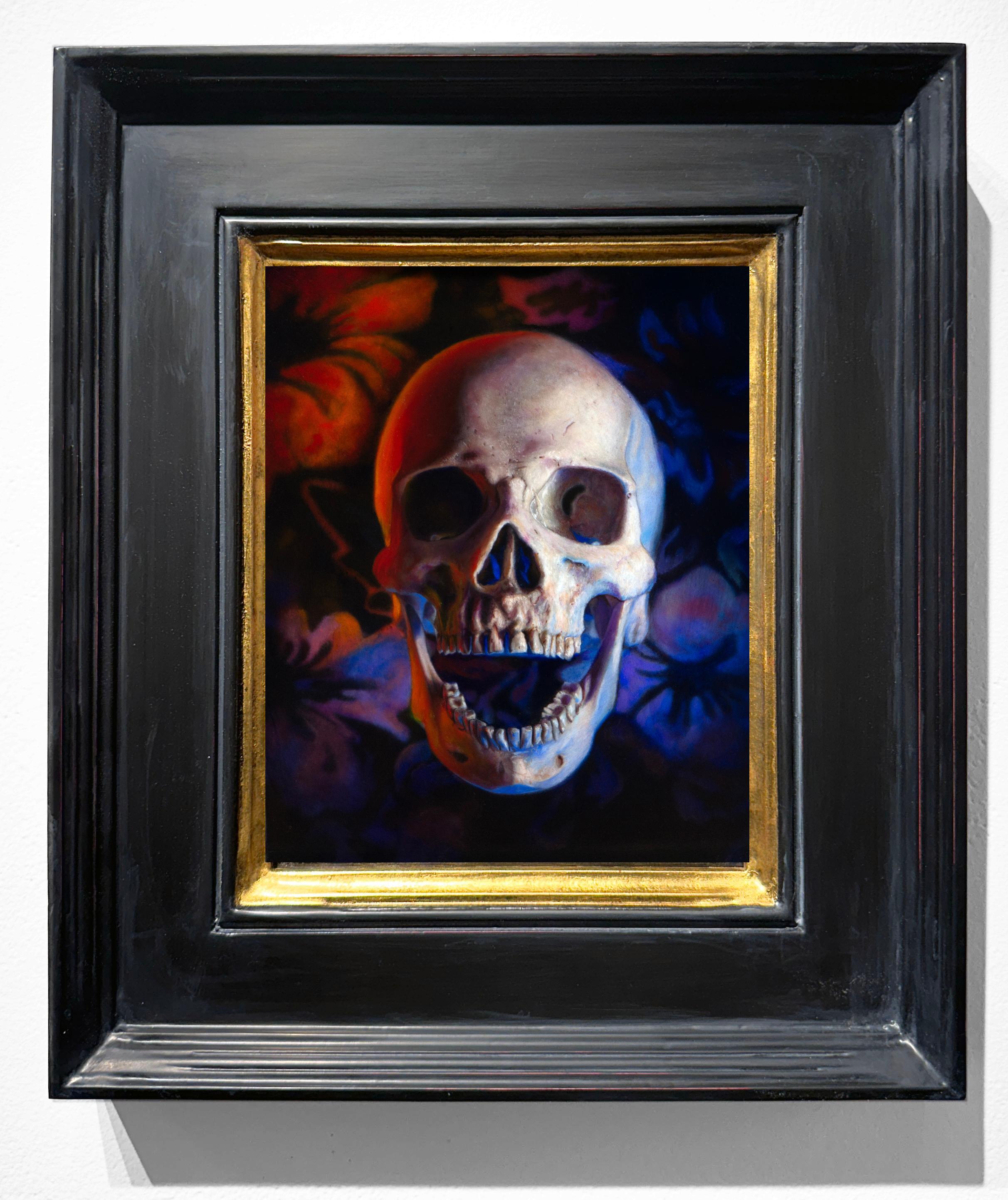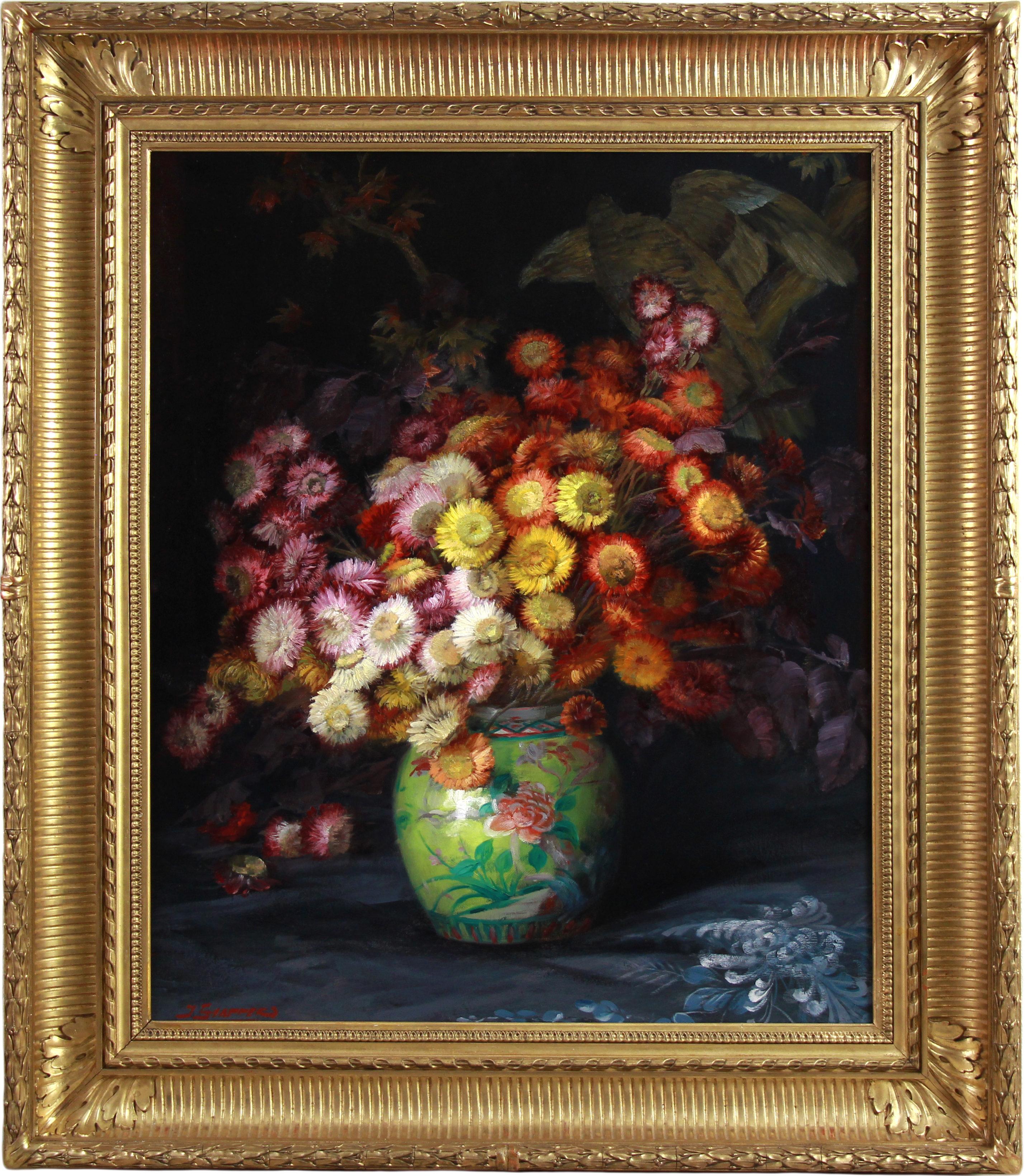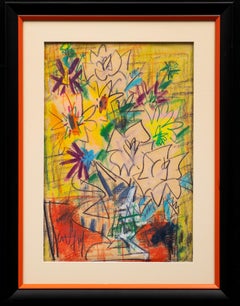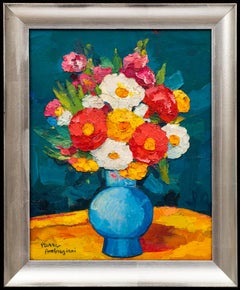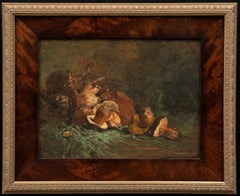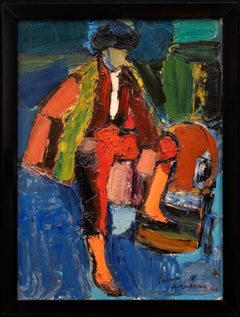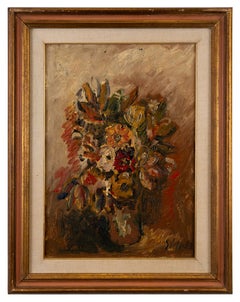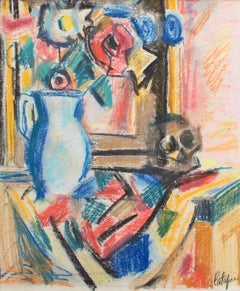Items Similar to Antique Fauvist "Still Life with Flowers and Skull" Louis Mathieu Verdilhan
Want more images or videos?
Request additional images or videos from the seller
1 of 12
Louis Mathieu Verdilhan Antique Fauvist "Still Life with Flowers and Skull" Louis Mathieu VerdilhanCirca 1910
Circa 1910
$23,500
£17,763.09
€20,412.95
CA$32,723.60
A$36,403.67
CHF 19,083.26
MX$444,843.96
NOK 243,001.51
SEK 228,752.30
DKK 152,374.89
Shipping
Retrieving quote...The 1stDibs Promise:
Authenticity Guarantee,
Money-Back Guarantee,
24-Hour Cancellation
About the Item
Antique Fauvist Vanitas "Still Life with Flowers and Skull"
Louis Mathieu Verdilhan (Provence, France, 1875-1928)
Circa 1910
Oil on canvas on wood panel
Signed
28 1/4 x 20 1/2 (36 x 28 frame) inches
From the Fauvist explosion, Louis Mathieu Verdilhan intercepted the fragments of molten matter that he worked with care, integrating certain innovations sparingly into his work, adapting the solutions provided by Fauvism to his own questioning. He thus learned to transpose colors frankly and to stretch them into flat areas and began to envisage a layering of planes that created a singular perspective.
Louis Mathieu Verdilhan was part of the tradition of the Provençal landscape painters of the second half of the 19th century, a fraternity whom he deeply admired. Strongly attached to the contributions of his predecessors, he was not, however, insensitive to the pictorial upheavals that occurred at the dawn of the 20th century. It was not until 1909 that Verdilhan's works began to pay tribute to Fauvism. He explored certain facets of the movement in a very personal way, allowing him to advance in his own investigations, both chromatic and formal. Fauvism would have acted on Verdilhan as a sort of revelation, bringing a collective answer to artistic problems that had been gnawing at the painter for some time.
Despite losing his left eye in 1902 due to an accident, he continued to paint so much that he first exhibited in Paris at the Salon des Indépendants in 1910.
In 1909, he exhibited at Bernheim's in Paris, alongside Edmond Cross, Félix Vallotton, Paul Signac, Pierre Bonnard and Edouard Vuillard. That year, at the request of the poet and art critic Joachim Gasquet, he painted a series of canvases about the park of Versailles. The following year, his work was presented at the Druet Gallery, around the works of Henri Manguin, Albert Marquet and Henri Matisse.
Between 1910 and 1914, Verdilhan divided his time between Paris and Marseille. He participated in the "Provençal Renaissance" which aimed to make the city a more dynamic artistic center. An exhibition dedicated to the artist was being prepared in Leipzig, but the war prevented its realization.
Since around 1911 Verdilhan's preoccupations brought him very close to the work of the German expressionists, and in particular to the group of early Expressionist artists known as the Der Blaue Reiter (The Blue Rider), which had just been created around Kandinsky, Franz Marc and August Macke. Pierre Girieud made the link between these foreign avant-garde movements and his Marseilles companions, particularly through his relationship with Adolf Erbslöh, co-founder of the New Munich Artists' Association (NKV).
Verdilhan explores sinuous and angular lines, sharp cuts, triangular flat areas. His palette takes on sharper tones in compositions giving expression to the artist's inner emotions.
From 1914, Verdilhan's work took a different direction, finding in the 1920s a synthetic form of expression of modernity. With his growing fame, the artist exhibited in 1923 with the New York gallery Kraushaar in New York and in 1925 collaborated on the decor of the Provence pavilion at the International Decorative Arts Exhibition.
Louis-Mathieu Verdilhan remains, alongside René Seyssaud and Auguste Chabaud as one of the principal progenitors of modernity in Provence. If each of the artists followed a very personal artistic path, their names were nevertheless regularly joined together to underline a form of innovative expression likely to inspire the younger generation in the region.
He was of a generous temperament and the colored passion and vigor of Fauvism enabled Verdilhan to express his own feelings whilst depicting the same stunning landscapes that Cézanne had painted. He distilled the subject, or its nature, into a few essential lines. He retained Cézanne’s classical organization of the composition in a way also used by Emile Othon-Friesz, Albert Marquet and Maurice de Vlaminck. Indeed, Marquet’s influence gave him a strong preference for using pale outlines surrounding blocks of color.
Verdilhan died prematurely at the age of 53 from cancer. His works are now kept in many museums in France and abroad. Retrospectives of his work were held at the Musée d’Art in Toulon in 1950 and 1967.
- Creator:Louis Mathieu Verdilhan (1875 - 1928, French)
- Creation Year:Circa 1910
- Dimensions:Height: 36 in (91.44 cm)Width: 28 in (71.12 cm)
- Medium:
- Movement & Style:
- Period:
- Condition:The painting is in very fine condition. The colors are actually very bright and rich with a wonderful sheen and gloss. The frame is original and though in good condition, it may exhibit the expected wear of antique picture frame.
- Gallery Location:SANTA FE, NM
- Reference Number:1stDibs: LU1408213585872
About the Seller
5.0
Platinum Seller
Premium sellers with a 4.7+ rating and 24-hour response times
Established in 1995
1stDibs seller since 2020
118 sales on 1stDibs
Typical response time: 1 hour
- ShippingRetrieving quote...Shipping from: Santa Fe, NM
- Return Policy
Authenticity Guarantee
In the unlikely event there’s an issue with an item’s authenticity, contact us within 1 year for a full refund. DetailsMoney-Back Guarantee
If your item is not as described, is damaged in transit, or does not arrive, contact us within 7 days for a full refund. Details24-Hour Cancellation
You have a 24-hour grace period in which to reconsider your purchase, with no questions asked.Vetted Professional Sellers
Our world-class sellers must adhere to strict standards for service and quality, maintaining the integrity of our listings.Price-Match Guarantee
If you find that a seller listed the same item for a lower price elsewhere, we’ll match it.Trusted Global Delivery
Our best-in-class carrier network provides specialized shipping options worldwide, including custom delivery.More From This Seller
View AllFrench Expressionism "A Vase of Flowers" Gen Paul (French, 1895-1975)
By Gen Paul
Located in SANTA FE, NM
"A Vase of Flowers"
Eugene Paul aka Gen Paul (French, 1895-1975)
Oil crayon on paper
20 1/2 x 14 (28 x 21 1/2 frame) inches
"Gen Paul is undoubtedly the greatest representative, and...
Category
1960s Expressionist Still-life Paintings
Materials
Paper, Oil Crayon
Still of Flowers in a Blue Vase Pierre Ambrogiani (France, 1905-1985)
By Pierre Ambrogiani
Located in SANTA FE, NM
"Still Life of Flowers in a Blue Vase"
Pierre Ambrogiani (France, 1905-1985)
Oil on panel
Circa 1960
15 3/4 x 20 (20 1/4 x 24 1/2 frame) inches
If the artists Diego Velázquez (Spai...
Category
1950s Expressionist Still-life Paintings
Materials
Panel, Oil
"Still Life of Mushrooms in Undergrowth" French circa 1830s
Located in SANTA FE, NM
"Still Life of Mushrooms in Undergrowth"
French circa 1830's-1840's
Oil on canvas
Illegibly initialed lower right
17 3/4 x 13 1/4 (25 1/2 x 21 frame) inches
This deftly painted depi...
Category
Mid-19th Century Realist Still-life Paintings
Materials
Canvas, Oil
"The Toreador" Pierre Ambrogiani (France, 1905-1985) Circa 1950s
By Pierre Ambrogiani
Located in SANTA FE, NM
"The Toreador"
Pierre Ambrogiani (France, 1905-1985)
Oil on canvas
Circa 1950's
28 1/4 x 20 3/4 (31 1/4 x 23 3/4 frame) inches
Signed bottom right corner
If the artists Diego Veláz...
Category
1950s Expressionist Still-life Paintings
Materials
Oil, Canvas
"Composition with Blue Gentians and Chrysanthemums" Jean Fournet (French 1878-?)
Located in SANTA FE, NM
"Composition with Blue Gentians and Chrysanthemums"
Jean Fournet (French 1878-?)
Oil on canvas on wood panel
13 1/2 x 11 1/2 frame size
Signed front and back
While little is known ...
Category
Early 1900s Art Nouveau Still-life Paintings
Materials
Wood, Oil
The Apple Tree Jules Paressant (French, 1917-2001)
Located in SANTA FE, NM
The Apple Tree
Jules Paressant (French, 1917-2001)
Oil on found wood panel
17 1/4 x 11 1/4 inches
The nature of the apple, as an idea unto itself, is ever young, ever fresh and free...
Category
1970s Modern Still-life Paintings
Materials
Wood, Oil
You May Also Like
Nature Morte - Post Impressionist Still Life Oil Painting by Georges D'Espagnat
By Georges d'Espagnat
Located in Marlow, Buckinghamshire
Signed oil on canvas still life circa 1910 by French post impressionist painter Georges D'Espagnat. The work depicts three ceramic vases of flowers on a table. There is a tale green ...
Category
1910s Post-Impressionist Still-life Paintings
Materials
Canvas, Oil
Flowers Bouquet Still Life Painting
By Robert Mendoze
Located in Lake Worth Beach, FL
Still Life Bouquet De Fleurs Champs, 1970.
Robert Mendoze was a French Post Impressionist painter who was born in 1930- 2014.
After graduating from the...
Category
1970s Post-Impressionist Still-life Paintings
Materials
Canvas, Oil
Still Life with Bouquet of Flowers
Located in Sheffield, MA
Emanuele Cappello
Italian, born 1936
Still Life with Bouquet of Flowers
Oil on canvas
19 ½ by 27 ½ in, w/ frame 28 ¼ by 36 ¼ in
Signed lower right
Category
Late 20th Century Impressionist Still-life Paintings
Materials
Oil
Bouquet of Flowers with Vanitas
By Louis Latapie
Located in London, GB
'Bouquet of Flowers with Vanitas', wax crayon on paper, by French artist, Louis Latapie (circa 1930s). A vanitas painting contains collections of objects symbolic of the inevitabilit...
Category
1930s Still-life Paintings
Materials
Paper, Wax Crayon
$2,422 Sale Price
20% Off
Vanitas III - Still Life Painting of a Human Skull & Flowers, Oil on Aluminum
By Matthew Cook
Located in Chicago, IL
Inscription on back of drawing:
Laughter is mad, and reckless mirth—
What does she in this weary earth?
Should Wealth, or Fame, Our life employ.
Death comes, our labour to destroy;
...
Category
2010s Old Masters Still-life Paintings
Materials
Oil, Acrylic
Oil On Canvas "Still life with flowers and Chinese vase" By Julien Stappers
Located in Gavere, BE
Oil On Canvas "Still life with flowers and Chinese vase" By Julien Stappers
Biography:
Julien Stappers was a Belgian painter who was born in 1875.
Stappers's work has been offered ...
Category
1920s Impressionist Still-life Paintings
Materials
Gold Leaf
More Ways To Browse
Antique Still Life
19th Century French Still Life
19th Century Still Life Flowers
French 19th Century Still Life Flowers
Painting With A Skull
Antique Skull
Henri Matisse Wood
Wood Skull
Marc Franz
Albert Link
Marquet Albert
Vanitas Still Life Paintings
Blaue Reiter
Antique Wood Plane
Der Blaue Reiter
August Macke
Felix Vallotton
Vanitas Skull

